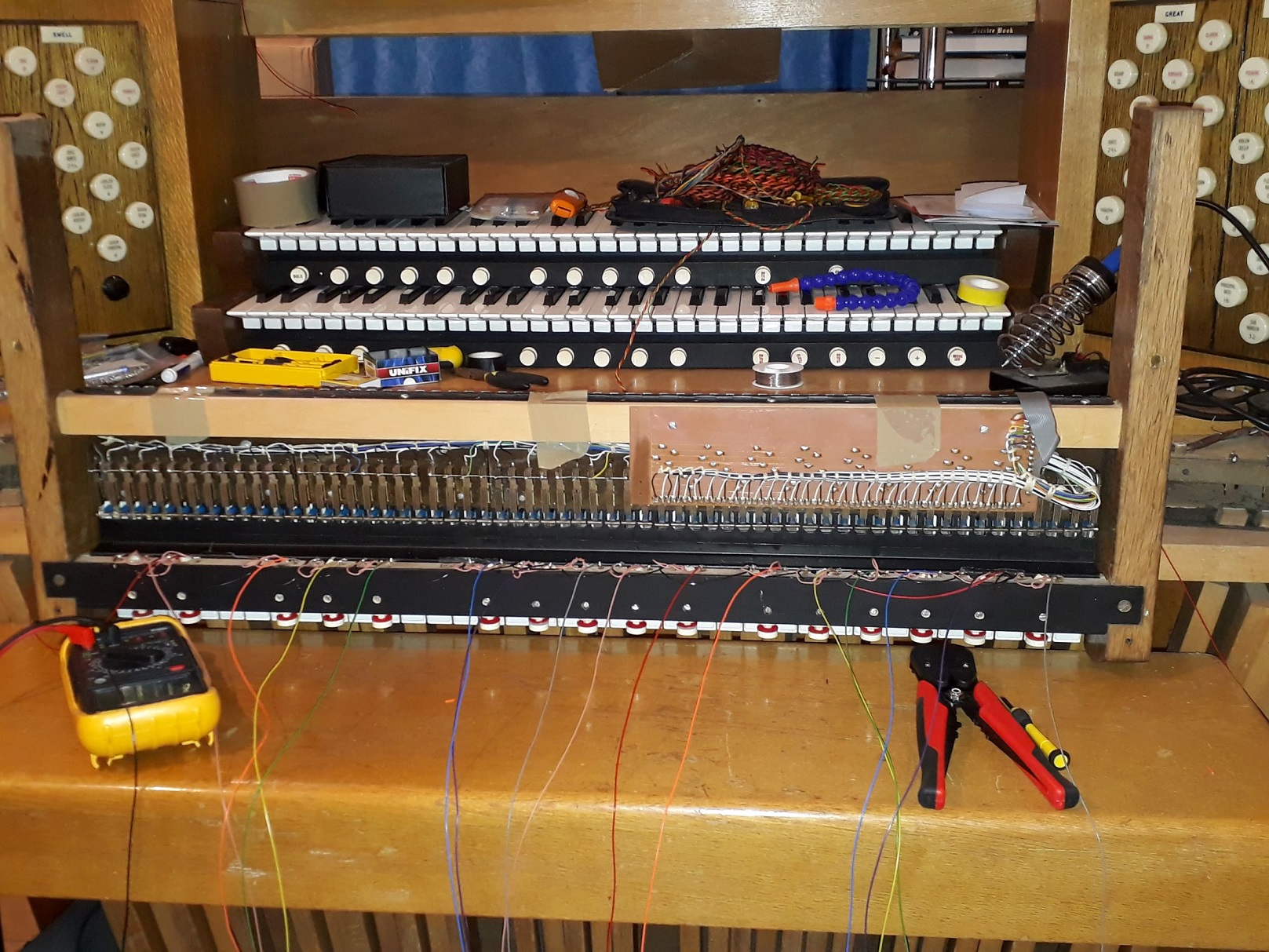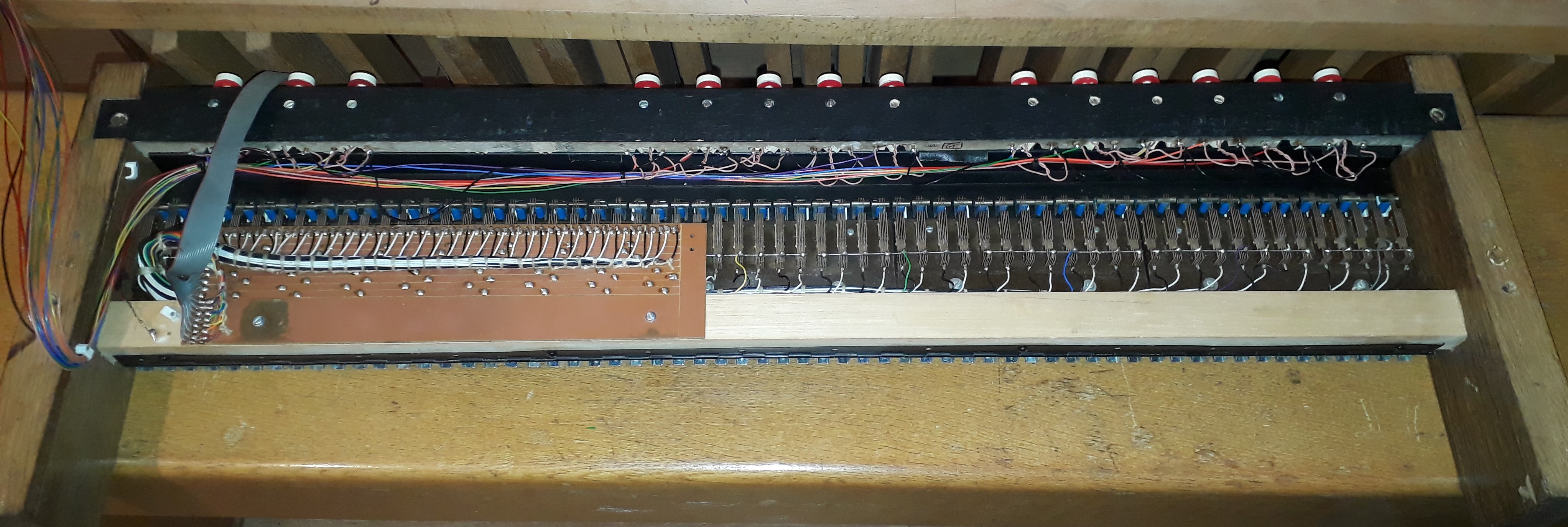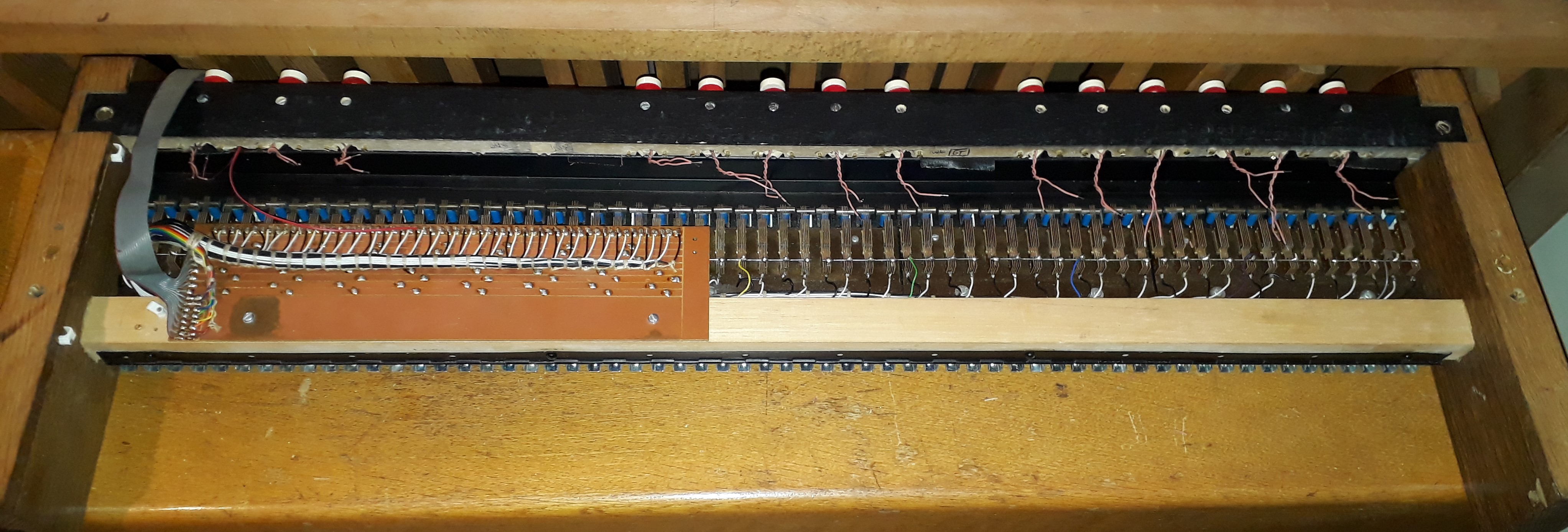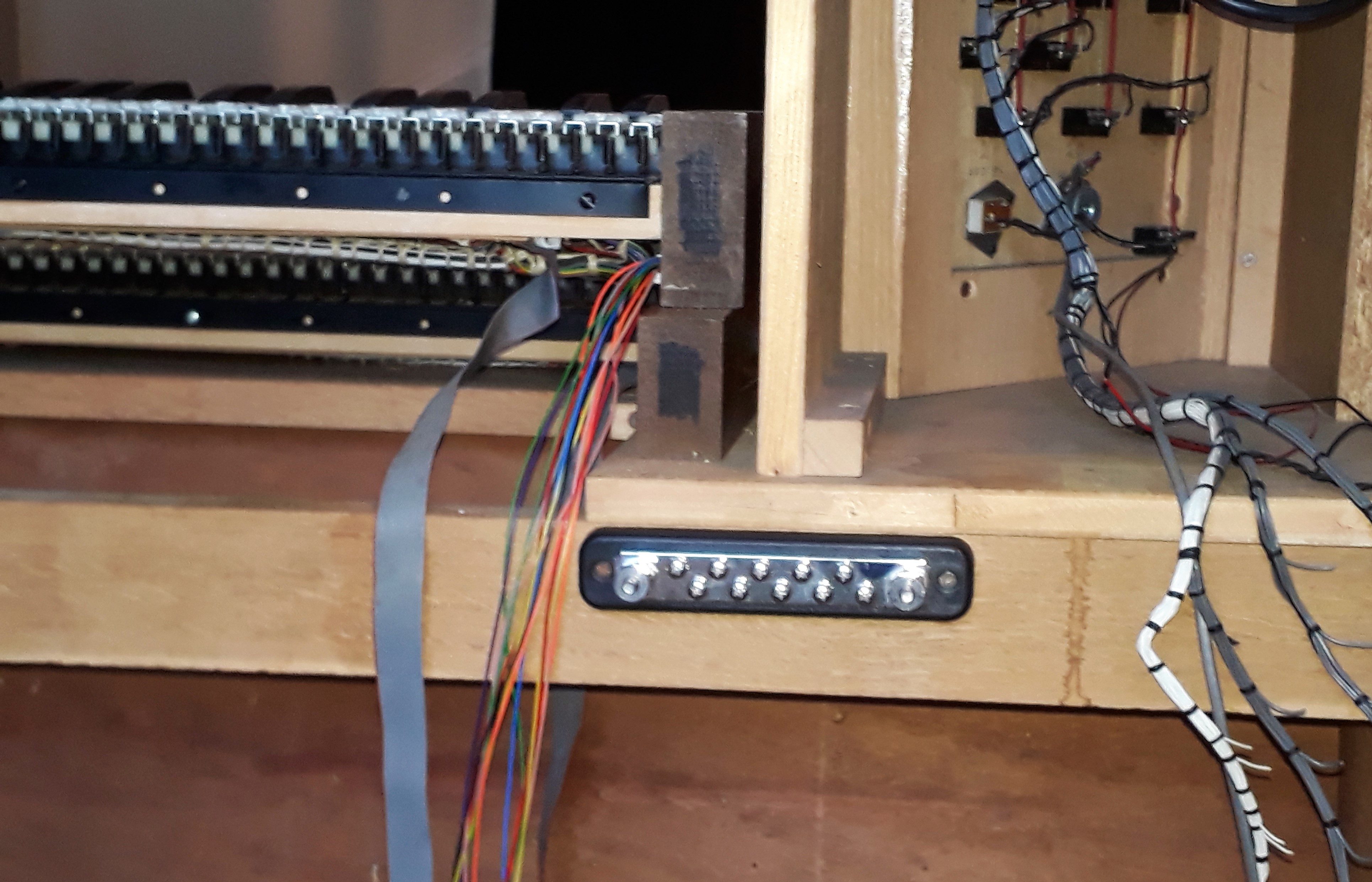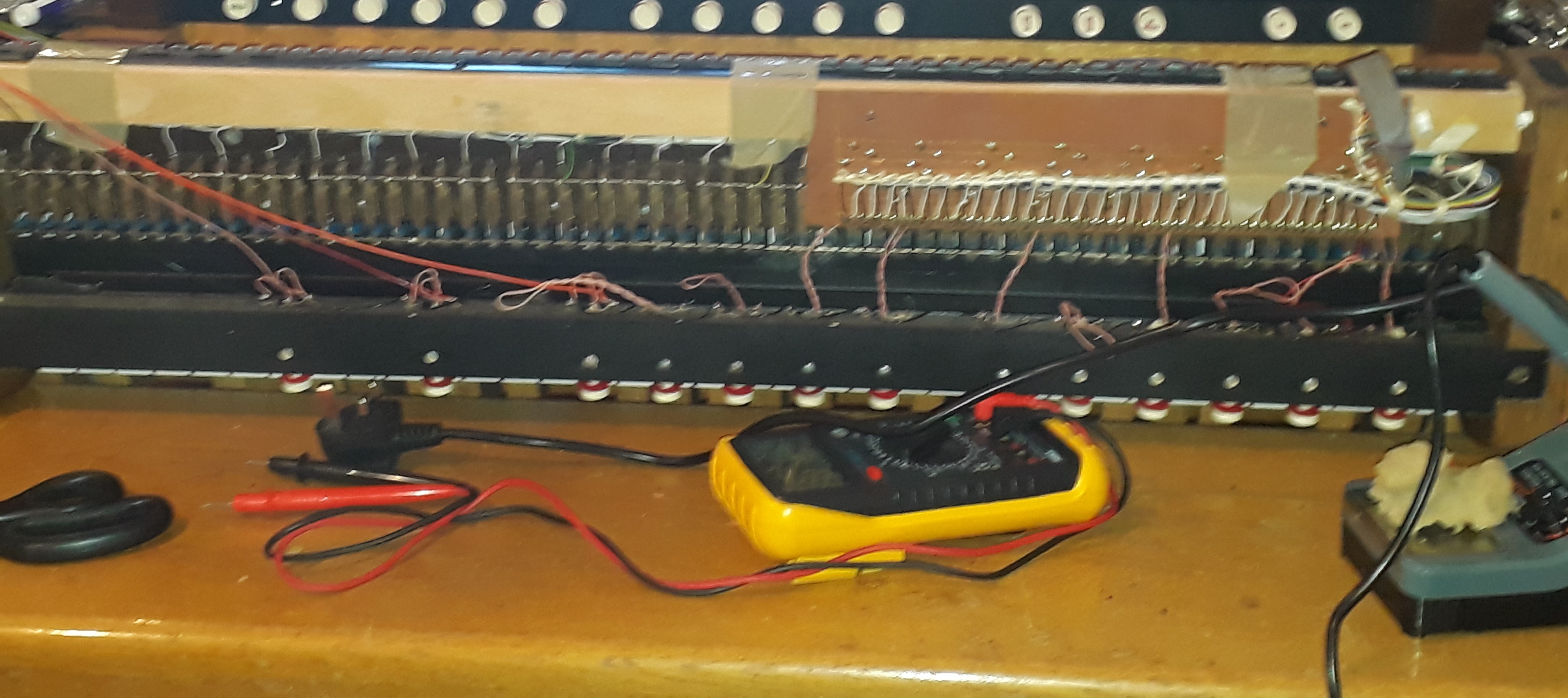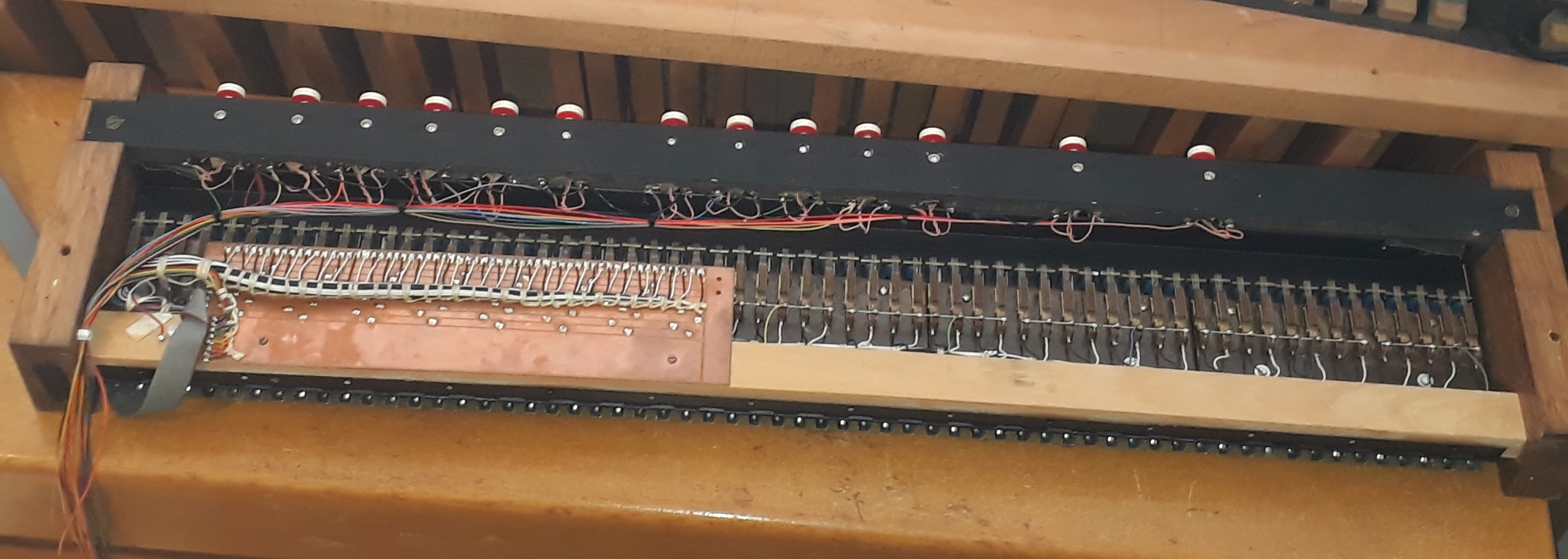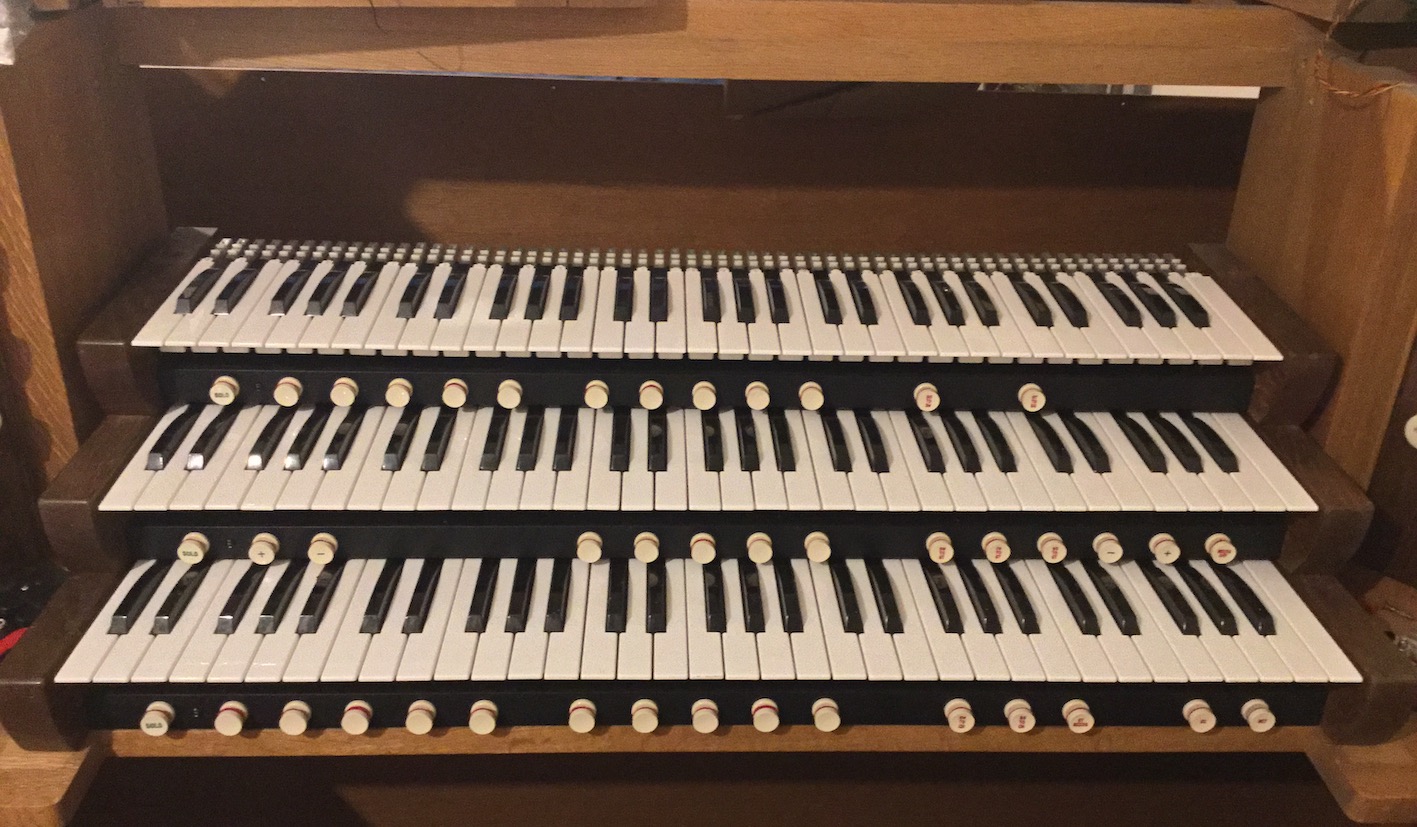Only one post for this manual, because I can only think of one pun (and even that is obscure).
Here we see the choir manual with all the pistons soldered and tested. Tomorrow’s job, if I have time, is to find the correct resistor for the LED solo division indicator, and solder it in. These LEDs are particularly bright, even with a relatively hefty resistor (if resistors can be said to have heft). The trick will be to find the right value to give a soft illumination, rather than being bright enough to read by.
The next step will be to re-solder the ribbon cables to meet the requirements of the MIDI interface board, and change the plugs. Then it will be time to think about where to affix the MIDI components.

